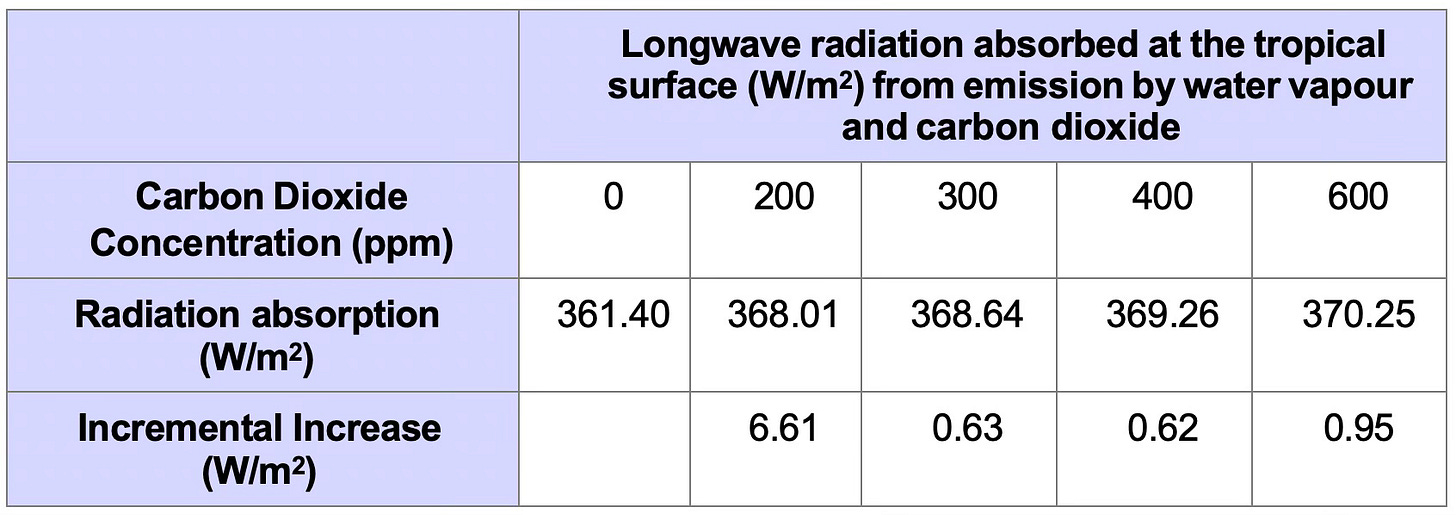William Kininmonth is the former head of Australia’s National Climate Centre. He recently put out a short paper raising and answering a key question. Does warm air warm the oceans or do warm oceans warm the air. As readers can image, the implications for the role of CO2 are nothing less than humungous, especially in regard to the way our economy and lives are being turned upside down on the theory CO2 controls temperature.
Here is the paper so readers can offer their own opinion of Kininmonth's arguments:
DONALD J TRUMP IS CORRECT: HUMANS ARE NOT THE CAUSE OF GLOBAL WARMING
By WILLIAM R KININMONTH
The temperature of the tropical atmosphere, the warmest region on Earth, is regulated by the equatorial ocean surface temperature.
Data collected over the recent 44 years (1979-2023) of satellite observations conclusively demonstrate that equatorial ocean surface temperature leads tropical atmospheric temperatures.

The correlation between the two series, when detrended, is 0.78. However, if the air temperature series is lagged then the correlation is increased to 0.85 at one and two months before falling to 0.80 at three months. Clearly, the tropical atmosphere air temperature follows the sea surface temperature. The air temperature does not control ocean surface temperature.
Convection in the equatorial region links the tropical atmospheric temperature to ocean surface temperature.
The buoyantly ascending air in the convection clouds follows a moist adiabatic lapse rate that is anchored to the temperature and water vapour content of the air near the ocean surface.
The recent temperature trend of the ocean surface temperature was 0.7oC/century, that of the lower troposphere air temperature was 1.6oC/century. The greater trend of the air temperature is to be expected because:
As the ocean surface temperature warms then the water vapour content of the air near the surface also increases to further shift the temperature of the ascending air in convection clouds to a warmer adiabatic lapse rate profile.
The profiles of moist adiabatic lapse rates spread with altitude as surface temperature and water vapour content increase.
Consequently, as equatorial ocean surface temperature increases it is expected that the increase in temperature of the atmosphere will warm faster, and that the rate of warming will increase with altitude. This expectation is confirmed by the warming rates over the latitude band 10oN to 10oS at standard pressure levels as given by the NCEP/NCAR R1 database.
The frequency of convection clouds penetrating high into the atmosphere decreases above 700mb (approximately 10,000ft) and so the influence of the warming ocean declines in the middle to high troposphere.
The region of greatest warming is over the poles in winter.
The warming trends of 2 metre air temperature for latitude bands as given by the NCEP/NCAR R1 database for 1979-2023 identify maximum warming over polar regions.
The minimum warming trend is over the latitude band 30oS to 60oS, which is largely ocean. The warming trend is much greater over the adjacent more southerly latitude band of the Antarctic continent. The warming trend increases successively moving northward from the equatorial band to the Arctic.
The wintertime maximum of polar warming is expected because during the months of polar darkness the temperature is sustained by transport of heat from the tropics, The warming tropical oceans has increased the flow of latent heat (through increased evaporation) to the tropical atmosphere. During the winter months of maximum heat transport by the atmosphere the additional heat is available to warm the polar air.
Carbon dioxide has little impact on tropical ocean temperature.
The only physical mechanism for increasing concentration of atmospheric carbon dioxide to impact on tropical ocean temperature is through an increase in emission of longwave radiation to be absorbed at the surface. However, water vapour and carbon dioxide have overlapping active absorption/emission bands for longwave radiation. In the tropical atmosphere the molecular number of water vapour molecules exceeds that of carbon dioxide by a factor of about 50. Water vapour molecules tend to absorb emissions by carbon dioxide molecules such that little of the additional emission from added carbon dioxide concentration reaches the surface.

Emission from water vapour dominates the longwave radiation absorbed at the tropical surface. Increasing the atmospheric carbon dioxide concentration has miniscule impact.
Conclusion.
Recent global warming has its origins in ocean warming, is natural, and has nothing to do with changing atmospheric carbon dioxide concentrations.
William Kininmonth w.kininmonth@bigpond.com
16 November 2024
So, what do you think?
#Kininmonth #Temperature #Climate #OceanTemperature #AirTemperature #CO2 #Trump #GlobalWarming









Surprise, real scientists have spoken up. Real Science is not cut and dried after all. Oops, Science is a discipline not a religion. Last time I looked, scientists were investigators, not priests. The news that honest scientists have begun working on this issue renders hope that intellectual honesty lives.
There is a simple experiment that anyone can do which shows that there is no greenhouse effect. see www.independentclimatescience.co.uk for details. The climate is actually controlled by a multitude of cyclic events, some of which can't be identified, but which exist all the same. $trillions have been spent trying to avert an imaginary threat causing worse results than the supposed threat.